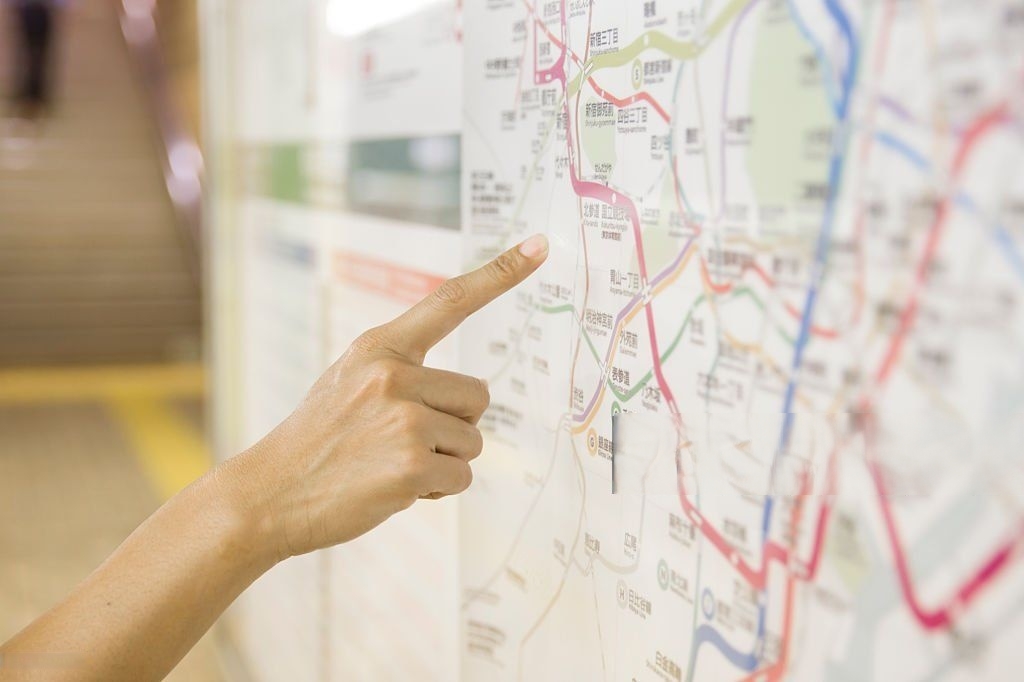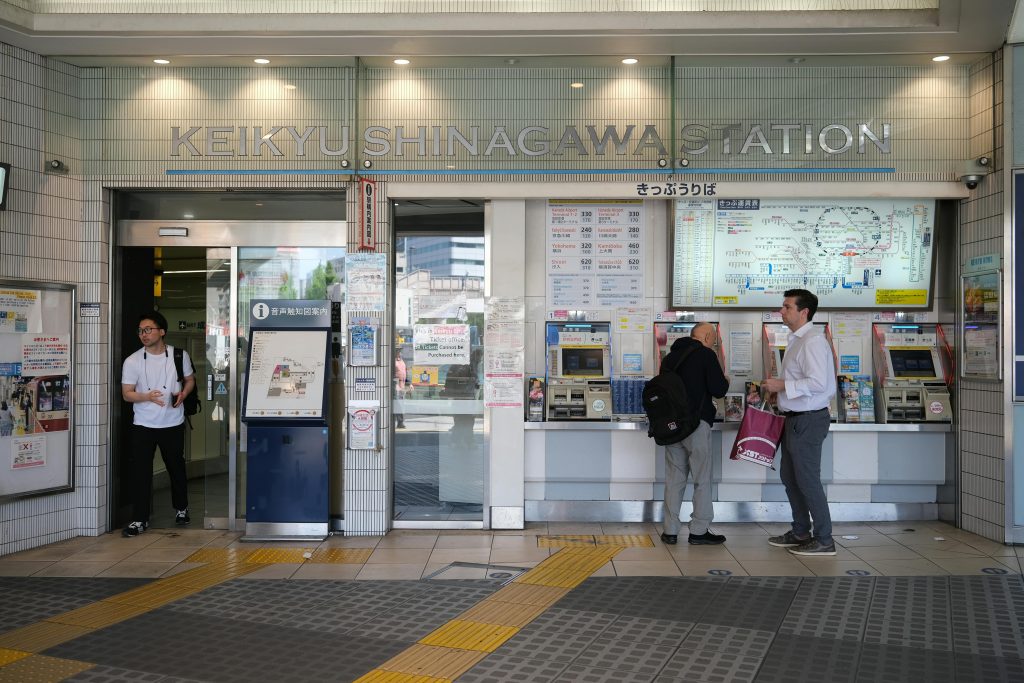TL;DR: By mastering IC cards like Suica and Pasmo, along with the Japan Rail Pass, you’ll explore Japan’s diverse attractions with ease. Remember to keep your cards topped up, use Google Maps, and embrace Japanese train etiquette for a hassle-free travel experience!
Imagine stepping off a plane in Japan, surrounded by a whirlwind of culture, food, and shopping. Excitement courses through your veins, but hold on—how on earth do you plan on getting from point A to point B amongst the bustling streets and intricate rail systems? Fear not, fellow explorers! We’ve found ourselves in this very predicament, standing bewildered in an airport terminal with a map that seemed to have been written in hieroglyphs. But fear not; this post will guide you through navigating Japan’s rail system smoothly and confidently.

Understanding Japan’s Rail Network
Overview of Japan’s Extensive Rail System
Japan boasts one of the most extensive and punctual rail systems in the world. With over
28,000 km of rail tracks, it connects major cities and rural areas alike. Imagine being able to travel from Tokyo to Osaka in just a few hours—this is made possible by the high-speed
Shinkansen trains, which can reach speeds of up to 320 km/h.
Navigating this network may seem intimidating at first. However, once you understand the
basics, you’ll find it to be a reliable and efficient way to explore the country. The train systems in Japan are truly a work of art—both in their efficiency and their engineering.
Importance of Rail Travel for Tourists
If you’re a tourist in Japan, using the rail system is essential. Not only does it save you time, but it also offers a unique experience. You can enjoy the scenic views of the countryside while sitting comfortably in your seat. Plus, research shows that 90% of travelers prefer rail for intra-city journeys. Why? Because it’s convenient and cost-effective.
Common Travel Routes and Regions Covered
Japan’s rail network covers a wide range of regions. Here are some common travel routes you might consider:
- Tokyo to Kyoto: Experience the blend of modern and traditional Japan.
- Osaka to Hiroshima: Visit historical sites and enjoy delicious local cuisine.
- Sapporo to Hakodate: Explore the beautiful landscapes of Hokkaido.
These routes are just a glimpse of what the rail system offers. You can easily hop on a train and find yourself in a completely different city within hours.
Benefits of Using Public Transport Over Taxis
While taxis are available, they often come with high fares, especially for longer distances. Here are a few benefits of using public transport:
- Cost-Effective: Train fares are generally cheaper than taxi rides.
- Time-Saving: Trains run frequently, reducing wait times.
- Environmentally Friendly: Public transport produces less pollution compared to individual car rides.
When you’re traveling, every yen counts. By choosing trains, you can allocate your budget to other experiences, like trying out local delicacies or visiting attractions.
Navigating the System
Once you arrive, purchasing an IC card like Suica or Pasmo, using their apps, or adding the digital IC card to your digital wallet simplifies everything. These cards allow for seamless travel across various train lines, making your journey smooth and hassle-free. You can buy them at major train stations or airports. Just remember: each traveler needs their own card!
Before boarding, tap your card on the IC sensor. This deducts the fare automatically. If you miss your train, don’t worry—another one will be along shortly. With Google Maps, you can easily track train schedules and platform numbers.
So, whether you’re visiting bustling Tokyo or serene Kyoto, Japan’s rail network is your best friend. It opens up a world of possibilities, allowing you to dive deep into the culture and beauty of this incredible country.

Ticket Machines & IC Cards: Suica vs. Pasmo
When you arrive in Japan, you’ll quickly find that getting around can be a bit overwhelming. But don’t worry! The Suica and Pasmo IC cards (the primary brands in the Kanto region) make it easier to navigate the public transportation system. So, what’s the difference between these two cards? Let’s break it down.
Key Differences and Similarities
First off, both Suica and Pasmo cards are quite similar in functionality. They both allow you to travel on trains, subways, and buses across Japan. Here are the key points:
- Issuer: Suica is issued by JR East, while Pasmo comes from Tokyo’s non-JR train companies.
- Interchangeability: You can use either card on the same systems without any issues.
- Temporary Cards: Due to recent shortages, temporary cards are now available. These are valid for 28 days from the date of purchase.
So, when it comes to choosing between Suica and Pasmo, it really boils down to convenience and your location when purchasing. Additionally, IC cards from different regions include ICOCA, SAPICA, HAYAKAKEN, TOICA, PiTaPa, SUGOCA, RYUTO, Kitaca, nimoca, icsca, odeca, and manaca. These work across the country, just as Suica and Pasmo do.
Where to Purchase Either Card
You can buy both cards at major train stations, airports, and even convenience stores. Here’s how:
- Suica: Available at JR East ticket machines and counters. You can pay in cash, and there’s no separate fee for the card.
- Pasmo: Purchase at the Pasmo desk in the airport. You can pay with a credit card, and the minimum initial purchase is 1,500 yen.
Both cards are easy to get, just follow the prompts at the machines, and you’ll be on your way!
Prices and Initial Balance Recommendations
Now, let’s talk about costs. Both cards have an initial cost of 500 yen. However, it’s wise to start with a balance of at least 3,000 yen for a smooth experience. Here’s a quick breakdown:
- Initial cost for Suica: 500 yen
- Initial cost for Pasmo: 500 yen
- Recommended starting balance: 3,000 yen
With this amount, you can enjoy your travels without constantly worrying about reloading your card. A smart rule of thumb is to never keep a balance of over 10,000 yen on a card, just in case it gets lost!
How to Refill and Manage Your IC Cards
Need to add funds to your card? It’s super simple! Just head back to a ticketing machine:
- Select your language — typically next to a globe icon 🌐 — and choose ‘charge’ option.
- Insert your card or place it in the scanning tray.
- Follow the prompts to add funds.
It’s that easy! You can also attach your card to a retractable lanyard for quick access, especially handy if you’re traveling with kids.
Before boarding a train, don’t forget to tap your card on the IC sensor. This will deduct the
correct fare once you reach your destination. And remember,
When in doubt, just grab an IC card and start exploring — it’s that simple!
In conclusion, whether you choose Suica or Pasmo, both cards serve the same purpose. The choice is more about convenience than utility. So, grab your card and start your adventure in Japan!
Tips for Avoiding Common Mistakes
To ensure a smooth transaction, keep these tips in mind:
- Always check the payment options available. Some machines accept cash, while others only take cards.
- Double-check the amount you’re loading onto your card. It’s easy to make a mistake!
- Don’t forget to tap your card on the IC sensor before boarding the train. This is essential for fare deduction.
With an estimated purchase time of under 5 minutes and an 85% success rate for first-time users, you’ll be in and out in no time. Understanding these machines makes your journey much easier.
Japanese ticket machines are advanced and user-friendly once you grasp the basics. With this guide, you can confidently navigate the ticket machines and enjoy your adventures across Japan.
Onboard Etiquette and Navigating Trains
Expected Behaviors in Japanese Trains
When you step onto a train in Japan, you’re entering a world where etiquette reigns supreme. It’s not just about getting from point A to point B; it’s about how you conduct yourself during the journey. Here are some key behaviors to keep in mind:
- Keep your voice down: Loud conversations are frowned upon. Imagine being in a library — this is how quiet you should be.
- Phone etiquette: Use your phone discreetly. If you must take a call, step outside the train.
- Priority seating: These seats are reserved for the elderly, pregnant women, and those with disabilities. Always offer your seat if someone needs it.
- Face the doors: When standing, face the doors. It helps maintain order and makes it easier for passengers to exit. In other words, ride the train
Respect is the unspoken rule of the railway — embrace it, and you’ll fit right in.
How to Find the Right Platform Using Google Maps
Navigating train stations can be overwhelming. But don’t worry! Google Maps is your best friend. It not only provides directions but also real-time updates. Here’s how to use it effectively:
- Open Google Maps and enter your destination.
- Select the public transport option.
- Follow the instructions to find the correct platform. It will even tell you which train to catch!
Make sure to check the train schedules as they can change. This is especially important during peak hours when trains are more frequent.
Dealing with Delays and Missed Trains
What happens if you miss your train? Don’t panic! Trains in Japan run frequently — over 13,000 services daily. The average delay is just 18 seconds. So, another train will be along shortly. Here’s what to do:
- Stay calm: Take a deep breath. Missing a train is common.
- Check the next train: Use Google Maps or the station’s display boards to find the next available train.
- Adjust your plans: If you’re running late, inform your destination or adjust your schedule.
Remember, the Japanese are very understanding when it comes to travel issues. Just be polite and you’ll be fine.
The Importance of Quietness and Respect in Public Transport
Quietness is not just about keeping noise levels down; it’s a sign of respect for fellow
passengers. Think of it as a shared space where everyone deserves peace. Here are some ways to practice this:
- Use headphones: If you listen to music or watch videos, use headphones to keep the noise to yourself.
- Be mindful of your belongings: Keep your bags close to you to avoid taking up extra space.
- Wait for others: Allow passengers to exit before you board. This simple act shows respect and helps maintain order.
By familiarizing yourself with these etiquettes, you can significantly enhance your travel
experience in Japan. Train travel can be a joy when everyone respects each other’s space and comfort.
Final Thoughts and Travel Tips
As you wrap up your adventures in Japan, it’s essential to reflect on what you’ve learned.
Traveling in Japan goes beyond getting from one place to another — it’s about the journey
itself. Each moment spent navigating the vibrant streets, bustling train stations, and serene temples contributes to a rich tapestry of experiences. Here are some key takeaways to keep in mind.
Key Takeaways
First and foremost, don’t underestimate the power of preparation. Familiarize yourself with
the local transportation system before you arrive. Whether you choose a Suica or Pasmo card, knowing how to use these cards will make your travels smoother. Remember, both cards are functional and accepted widely, so pick whichever is more convenient for you.
Secondly, embrace the culture. Japan is a land of unique traditions and customs. From the art of tea ceremonies to the practice of bowing, every encounter offers a glimpse into a beautiful heritage. Try to engage with locals, and you may discover hidden gems that aren’t in any guidebook.
Finding Help When You’re Lost
Even the best-laid plans can go awry. If you find yourself lost, don’t hesitate to ask for help. Locals are generally friendly and eager to assist. Give a good “Chotto ii-desuka?” and most Japanese people will try their best to communicate, even if it means using gestures or a translation app. You might be surprised at how willing they are to go out of their way to help you find your way.
Additionally, keep your phone handy with Google Maps. It’s a reliable resource for navigating the train schedules and finding your next destination. If you miss a train, don’t worry! Another one will be along shortly. Patience is key.
Explore and Discover Hidden Gems
Japan is filled with hidden treasures waiting to be discovered. From quaint neighborhoods to lesser-known temples, these experiences can often be more rewarding than the popular tourist spots. Have you ever stumbled upon a tiny ramen shop tucked away in an alley? Those moments can become your fondest memories.
Try to wander off the beaten path. Take a stroll through local markets or visit a small shrine. You never know what you might find. Each experience adds to the richness of your journey.
Personal Anecdotes
Reflecting on travels of our own, we remember a day spent together in Kyoto. We ventured into a small tea house and were greeted by the warm smile of the owner. She shared stories about the history of the tea ceremony and even invited us to participate. That moment was a highlight of our trip, reminding me of the importance of cultural exchange.
Every experience aboard Japan’s trains contributes to the tapestry of your travels; don’t rush through it all! Take a moment to enjoy the surroundings, the people, and the unique
atmosphere. To beat a dead horse, travel is not just about the destination; it’s about the journey itself. So, take your time and savor every moment.
In conclusion, your adventure in Japan is just the beginning. Keep these tips in mind, and you’ll be well-equipped for your travels. Embrace the culture, ask for help when needed, and don’t hesitate to explore the hidden gems. Happy travels!

